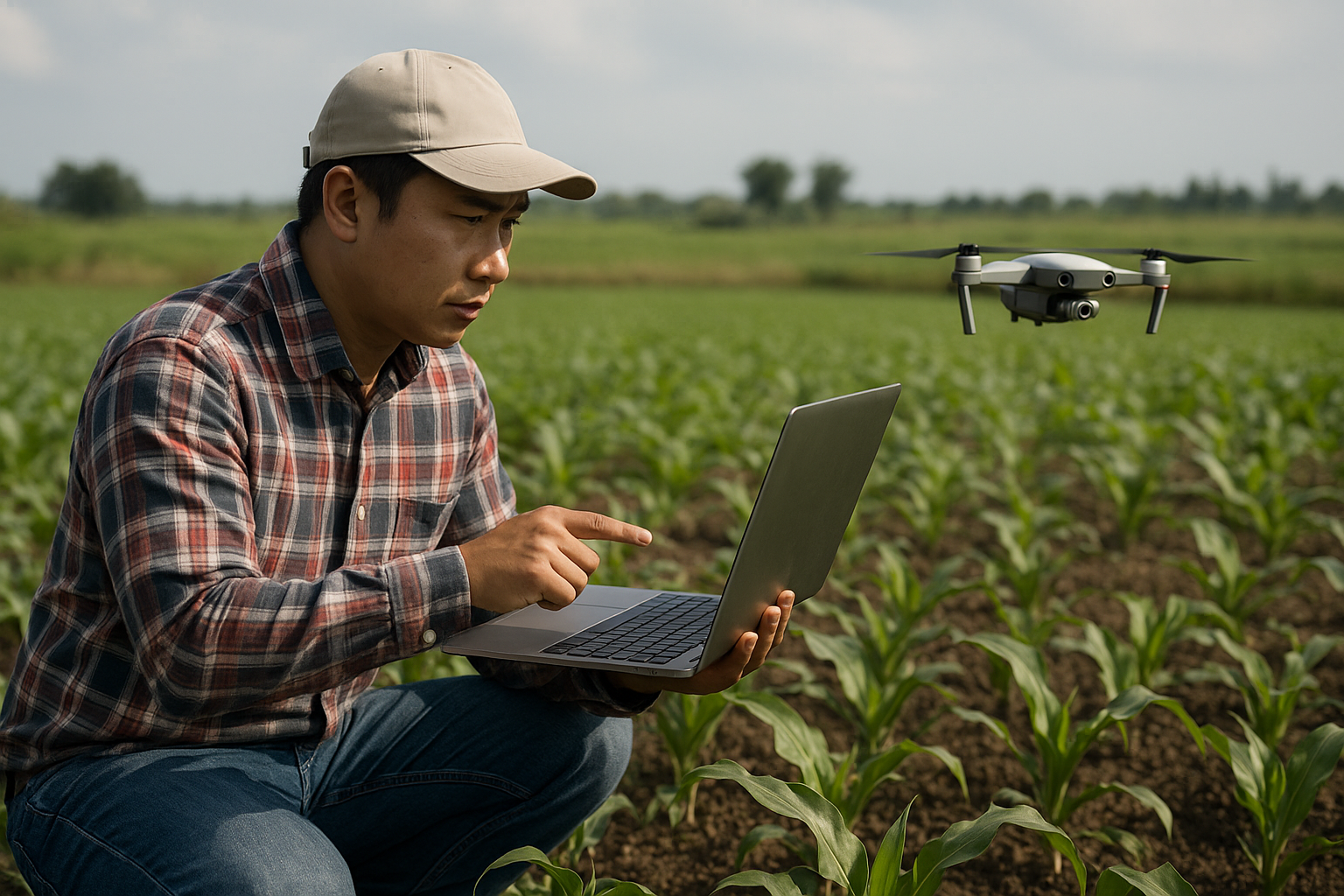Future of farming goes high-tech: Key AI trends powering agricultural innovation
The integration of AI and IoT has transformed farming into a dynamic data ecosystem, where predictive insights replace reactive management. Yet, as the authors observe, progress has been uneven across regions due to gaps in data quality, infrastructure, and technology adoption.

Artificial intelligence is redefining global agriculture through data-driven precision, real-time analytics, and machine-guided interventions that replace intuition-based farming. In a new review, researchers explore how deep learning, machine vision, and Internet of Things (IoT) technologies are steering the world toward smarter, more sustainable agricultural ecosystems.
Their paper, "Research Status and Development Trends of Artificial Intelligence in Smart Agriculture," published in the journal Agriculture, offers one of the most comprehensive analyses to date of artificial intelligence applications across every stage of the farming lifecycle. The authors argue that AI is transforming agriculture from a traditionally experience-driven practice into a precision-based industry built on sensor data, automation, and predictive analytics.
From seeds to sensors: How AI is revolutionizing the farming chain
The review defines AI as a driver of agricultural modernization that integrates machine learning, deep learning, and computer vision for tasks like object detection, crop recognition, and environmental monitoring. The authors note that smart agriculture is emerging as a solution to global food security challenges by combining data science with environmental awareness.
At the core of AI applications in agriculture are image-based recognition and decision-making models. Machine learning algorithms, particularly convolutional neural networks (CNNs) and transformer architectures, now assist in identifying crop types, detecting plant diseases, and assessing soil and water conditions. These models analyze vast datasets collected from aerial drones, satellites, and field sensors, allowing farmers to make informed, real-time decisions.
The study divides agricultural AI applications into several key areas:
- Crop detection and disease diagnosis: Algorithms trained on spectral and image data can identify pests, nutrient deficiencies, and infections at early stages.
- Food quality assessment: Deep learning combined with hyperspectral imaging enables non-destructive testing of food products, improving quality control in supply chains.
- Intelligent robotics: Agricultural robots powered by AI perform precision planting, spraying, and harvesting, minimizing labor and maximizing efficiency.
- Agro-IoT systems: Networked sensors and edge-computing devices monitor microclimates and soil composition, supporting automated irrigation and fertilization systems.
This integration of AI and IoT has transformed farming into a dynamic data ecosystem, where predictive insights replace reactive management. Yet, as the authors observe, progress has been uneven across regions due to gaps in data quality, infrastructure, and technology adoption.
The challenges holding back smart agriculture
Despite remarkable advances, the study identifies several persistent barriers to widespread AI adoption in agriculture. These include limited data availability, poor interoperability of IoT systems, and the need for lighter, more energy-efficient models capable of running on low-power edge devices deployed in fields.
Agricultural environments are inherently unpredictable. Factors such as lighting changes, soil heterogeneity, and weather variation make it difficult for AI models trained in controlled settings to perform reliably in real-world conditions. The authors emphasize that model generalization, the ability of AI to adapt across crops, regions, and seasons, remains a major challenge.
Another key issue is interpretability. While deep learning models have achieved high accuracy in crop recognition and yield prediction, their decision-making processes often lack transparency. This black-box nature makes it difficult for farmers and agronomists to understand how predictions are generated, reducing trust and practical adoption.
The review also warns of the data gap in agriculture: a scarcity of large, high-quality annotated datasets limits the ability to train robust models. Many farms lack sufficient IoT infrastructure or connectivity, resulting in fragmented and incomplete datasets. These data limitations contribute to inefficiencies in scaling AI tools from laboratory prototypes to full operational systems.
Additionally, the authors highlight the technical and economic constraints of implementing AI-powered robotics. While autonomous tractors and harvesters have achieved promising results, they often struggle in complex field environments where crops overlap or grow irregularly. The costs of hardware, maintenance, and training further deter adoption in developing agricultural regions.
Charting the future: Integrating intelligence across systems
Furthermore, the authors outline a forward-looking roadmap for next-generation agricultural intelligence systems. They argue that the key to advancing smart agriculture lies in integrating AI with multimodal data sources, enabling systems to process visual, auditory, and environmental signals simultaneously.
Emerging research directions identified in the paper include:
- Lightweight and efficient algorithms: Developing AI models optimized for low-power devices, making real-time analysis feasible in rural and resource-constrained areas.
- Transfer and small-sample learning: Leveraging pre-trained models to improve accuracy with limited data, a critical step for crops or regions lacking large datasets.
- Fusion of AI and IoT (AIoT): Building connected ecosystems that use AI to interpret sensor data in real time, optimizing irrigation, fertilization, and pest management automatically.
- Embodied intelligence in agricultural robots: Creating machines capable of perception, reasoning, and physical interaction with complex environments.
- Incorporating large language models (LLMs): Using conversational and generative AI to assist farmers in decision-making, documentation, and predictive analysis.
The study calls for cross-disciplinary collaboration, combining expertise from agriculture, data science, robotics, and environmental engineering. It calls for stronger policy support, international research cooperation, and targeted education programs to train the next generation of agricultural technologists.
Moreover, the paper envisions a multi-layered intelligent agricultural ecosystem, where AI not only performs operational tasks but also contributes to sustainability goals. Predictive analytics could optimize resource use, reduce chemical inputs, and mitigate the environmental footprint of large-scale farming. In this system, human expertise remains central but is enhanced by machine intelligence capable of handling complexity beyond human scale
- FIRST PUBLISHED IN:
- Devdiscourse









